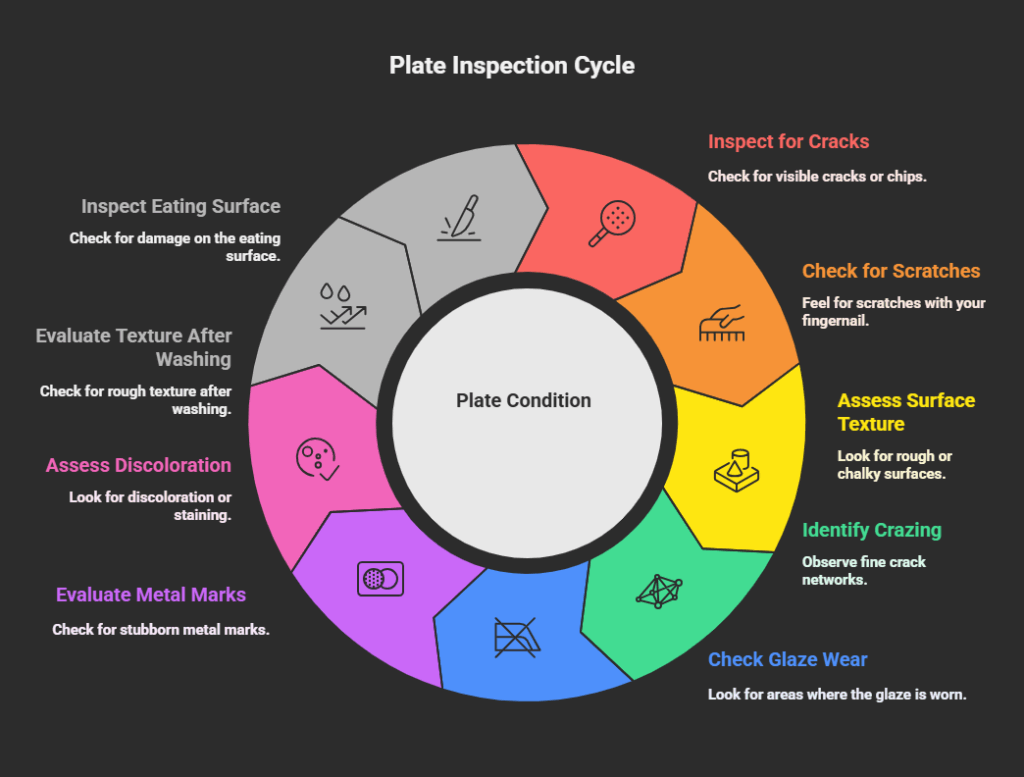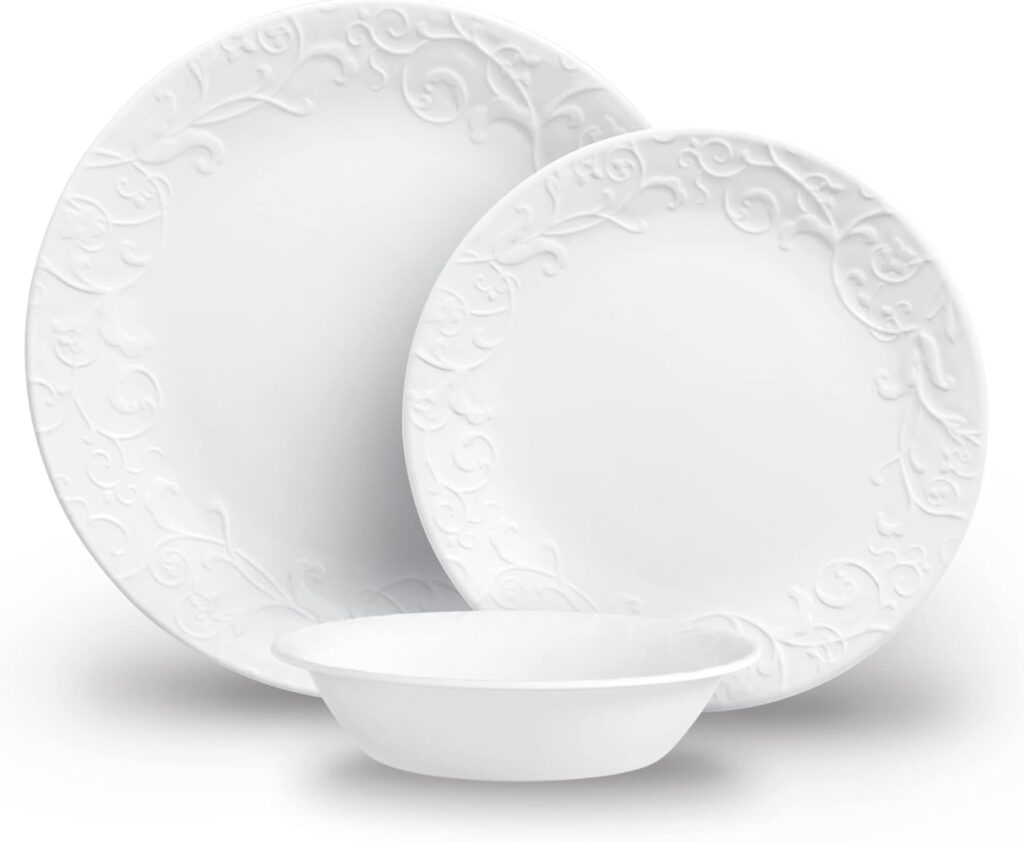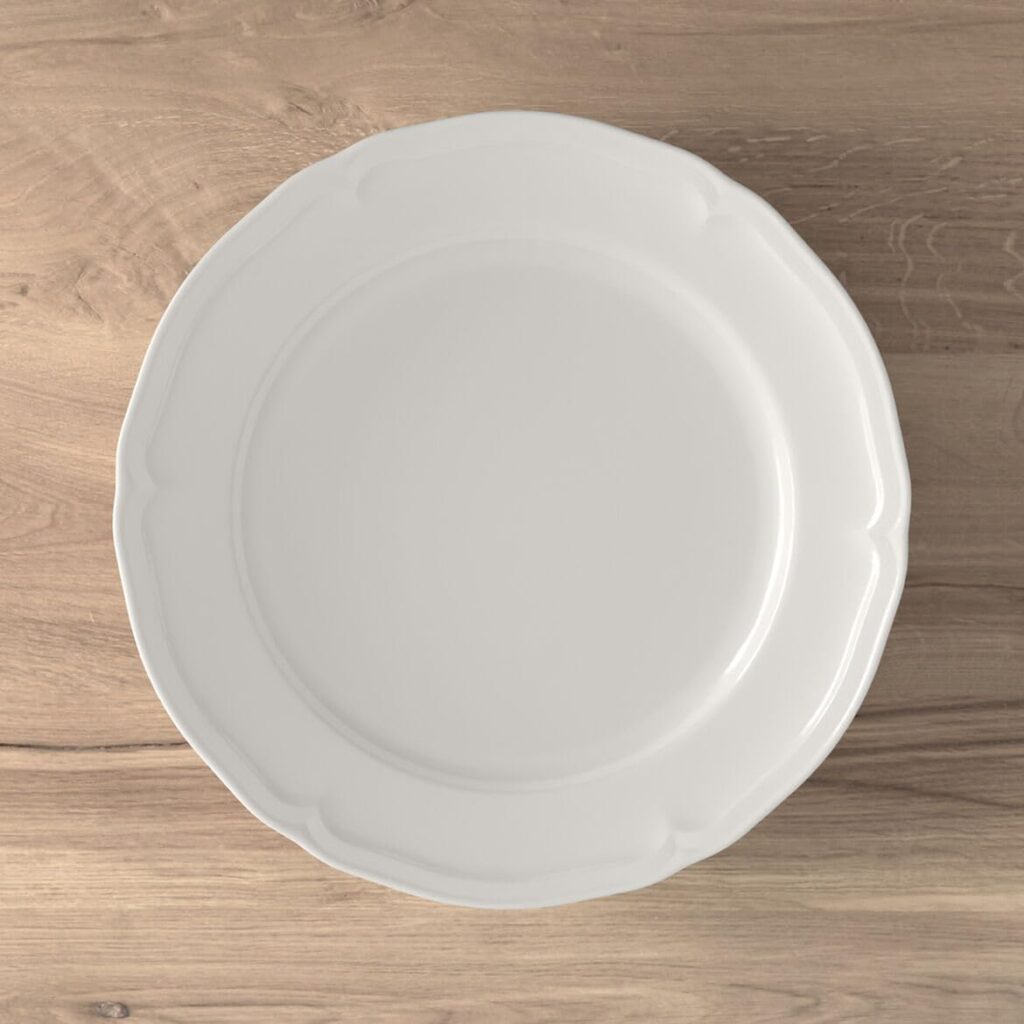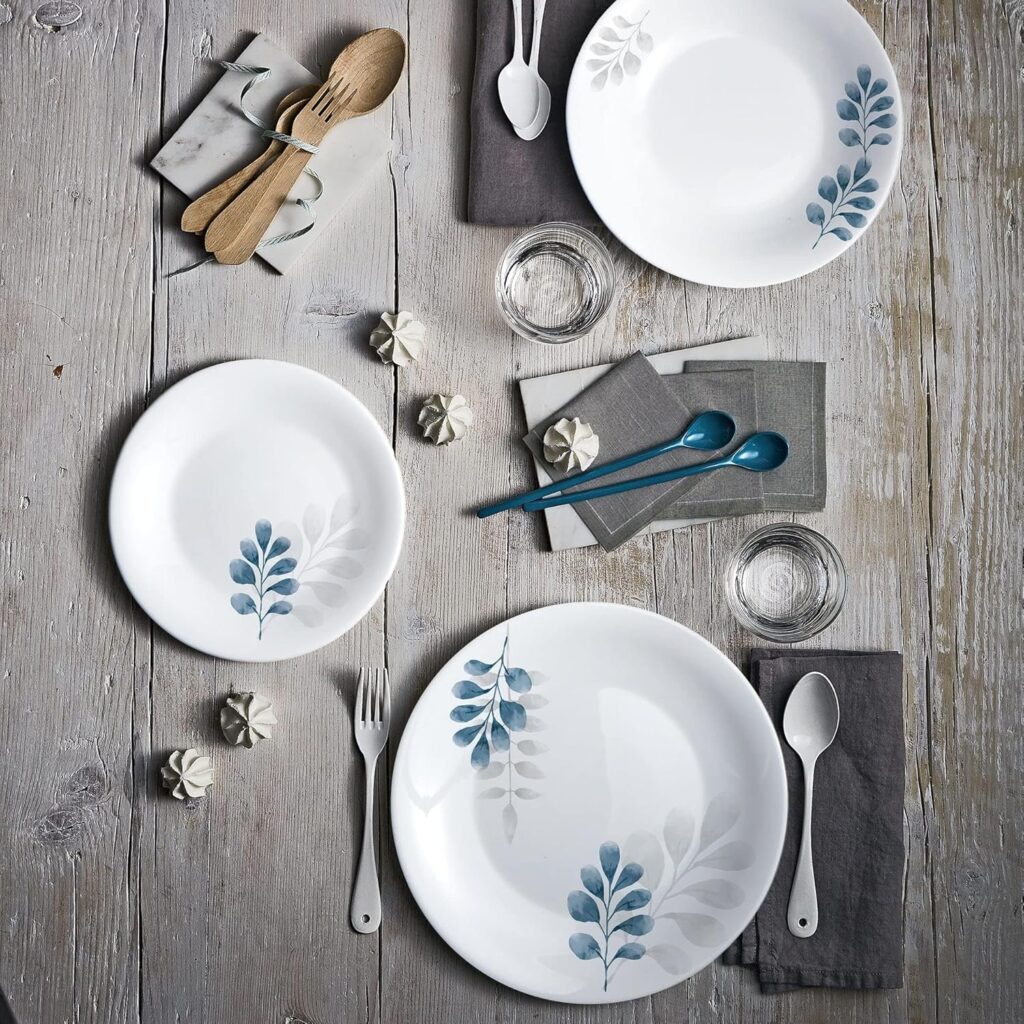KEY TAKEAWAY: Yes, truly scratched plates can be dangerous. While most marks on plates are harmless metal traces from cutlery, real scratches in poor quality ceramic glazes can harbor bacteria and release toxic chemicals like lead into your food. However, not all plate damage poses the same risk.
You’ve probably noticed marks on your favorite dinner plates. Maybe you’ve wondered if it’s safe to keep using them.
This concern is more common than you think. Many people worry about the safety of their scratched dinnerware.
The truth is, some plate damage is harmless. But other types can put your health at risk. In this guide, you’ll learn how to tell the difference.
You’ll also discover when it’s time to replace your plates and which brands offer the safest options.
THE TRUTH ABOUT “SCRATCHED” PLATES
First, let’s clear up a common mistake. Most marks on plates aren’t actually scratches. They’re metal marks from your cutlery.
These gray or black lines look scary, but they’re just metal traces sitting on top of your plate’s surface.
You can usually remove these marks easily. Try using a paste made from baking soda and water. Gently scrub the marks with a soft cloth. If they come off, they weren’t real scratches.
Learning how to remove silvermarks properly can save you from throwing away perfectly good dishes.

Real scratches are different. They go into the plate’s surface. These create tiny grooves that you can feel with your fingernail. Unlike metal marks, true scratches can’t be cleaned away.
So how do you know if your plate is truly scratched? Run your finger across the mark. If you feel a groove or indent, it’s a real scratch. If the surface feels smooth, it’s probably just a metal mark.
True scratches usually happen after years of use. They occur when the protective glaze on your plate wears away. This is when safety concerns begin.
HEALTH RISKS OF DAMAGED DINNERWARE
Once your plates develop real scratches or chips, several health risks emerge. These damaged areas create perfect hiding spots for harmful bacteria.
Even thorough washing can’t always remove germs from these tiny cracks.
Bacterial Growth Concerns
Bacteria love to hide in scratched surfaces. Food particles get trapped in these small spaces. Over time, dangerous germs can multiply. When you eat off these plates, you risk getting sick from food poisoning.
Common symptoms include stomach pain, nausea, and diarrhea. In severe cases, bacterial infections can be life-threatening.
This risk is especially high for children, elderly people, and those with weak immune systems.
Chemical Leaching Dangers
Perhaps more concerning is the release of toxic chemicals. Many ceramic glazes contain lead and cadmium.
When plates are intact, these chemicals stay locked in the glaze. But scratches and chips can let them escape into your food.
Lead poisoning is particularly dangerous. It can cause brain damage, especially in children. Cadmium exposure can harm your kidneys and bones.
Hot and acidic foods make this problem worse. They pull more toxins from damaged plates.
Special Risk Factors
Certain foods increase the danger. Tomato-based sauces, citrus fruits, and hot soups are especially risky. These acidic foods can pull lead and cadmium from scratched glazes more easily.
Pregnant women and young children face the highest risk. Their bodies absorb more lead than adults. Even small amounts can cause serious health problems.
MATERIAL-SPECIFIC SAFETY GUIDE
Different plate materials pose different risks when damaged. Understanding these differences helps you make safer choices.
Ceramic and Porcelain Risks
Traditional ceramic and porcelain plates are the most concerning when scratched. Many contain lead and cadmium in their glazes. Vintage plates and imported dishes from certain countries are especially risky.
Bright-colored glazes often contain more toxic metals. Red, orange, and yellow glazes frequently have high lead levels. When these plates get scratched, the risk increases significantly.
Stoneware Safety Profile
Stoneware is generally safer than regular ceramic. It’s fired at higher temperatures, making it denser and less porous.
This reduces the risk of bacterial growth. However, scratched stoneware can still harbor germs if the damage is severe.
Quality stoneware from reputable brands is usually lead-free. But you should still replace pieces with visible damage.
Glass Dinnerware Advantages
Tempered glass plates are among the safest options. They don’t contain toxic metals like lead or cadmium. Glass is also non-porous, so bacteria can’t easily hide in scratches.
However, glass plates can still chip or crack. Sharp edges from broken glass create injury risks. Replace any glass plates with chips or cracks immediately.
Materials to Avoid
Be extra careful with these types of plates:
- Vintage dishes made before 1978
- Imported ceramics from countries with loose regulations
- Handmade pottery with unknown glaze composition
- Plates with bright, colorful glazes
- Dishes that feel rough or chalky.
WHEN TO REPLACE YOUR DINNERWARE
Knowing when to replace your plates is crucial for safety. Here’s a simple inspection checklist:

Replace plates immediately if they have:
- Visible cracks or chips
- Scratches you can feel with your fingernail
- Rough or chalky surfaces
- Crazing (fine crack networks)
- Areas where the glaze has worn away
Consider replacement if plates have:
- Multiple metal marks that won’t come off
- Discoloration or staining
- A rough texture after washing
- Any damage on the eating surface
Professional testing is available if you’re unsure. Hardware stores sell lead test kits for affordable prices.
These can detect lead in your dinnerware. However, they only work on surfaces, not buried lead in glazes.
SAFEST DINNERWARE BRANDS & MATERIALS
Choosing the right dinnerware brands can prevent safety issues. Here are the safest options:
Comparison Table: Dinnerware Safety
| Material | Lead Risk | Bacteria Risk | Durability / Cost |
| Stoneware | Low | Low | High / Medium |
| Porcelain (quality) | Low | Low | High / High |
| Tempered Glass | None | Very Low | Medium / Low |
| Melamine | Low | Medium | High / Low |
| Vintage Ceramic | High | High | Medium / Variable |
Recommended Safe Brands
HF Coors – Known for commercial-grade stoneware. Their plates resist scratches and are lead-free. Many restaurants use these dishes resistant to cutlery marks.

Corelle Winter Frost White Collection – Made from tempered glass. Lightweight but durable. No lead or cadmium concerns.

Villeroy & Boch – German porcelain brand with strict safety standards. Their glazes are lead-free and highly durable.

Bormioli Rocco Tempered Opal glass – Modern brand focused on non-toxic materials, free from lead and cadmium. Made in Spain.
What Certifications to Look For
When shopping, look for these safety marks:
- FDA approved for food use
- Lead-free certification
- Proposition 65 compliant
- NSF International certified
Budget-Friendly Safe Options
You don’t need to spend a fortune for safe dinnerware. Many affordable brands offer lead-free options.
Check discount stores for white high quality stoneware, porcelain, Bone china or ceramic sets. These are often the safest and most affordable choice.
MAINTENANCE TIPS FOR SAFE DINNERWARE
Proper care extends the life of your dinnerware and keeps it safe:
Cleaning Guidelines:
- Use mild dish soap and warm water
- Avoid abrasive cleaners or scrubbers
- Hand wash vintage or delicate pieces
- Dry thoroughly to prevent bacterial growth
Storage Recommendations:
- Stack plates with protective layers
- Store in dry, clean cabinets
- Avoid extreme temperature changes
- Keep away from direct sunlight
Preventing Damage:
- Use plastic or wooden utensils when possible
- Don’t cut food directly on plates
- Microwave only microwave-safe dishes
- Handle with care when moving
Regular inspection is key. Check your plates monthly for new damage. Address problems early to prevent health risks.
FREQUENTLY ASKED QUESTIONS
Light surface scratches that you can’t feel are usually safe. However, any scratch that catches your fingernail should be cause for concern.
Not necessarily. White glazes can still contain lead, especially in older dishes. Check the manufacturer’s specifications.
CONCLUSION
Scratched plates can indeed be dangerous, but not all damage is the same. Metal marks from cutlery are harmless and removable.
However, true scratches in ceramic glazes can harbor bacteria and release toxic chemicals into your food.
The key is learning to identify real damage. When in doubt, replace questionable pieces. Your health is worth more than keeping old dinnerware.
Choose quality brands that prioritize safety. With proper care and regular inspection, you can enjoy safe meals for years to come.
Remember: when it comes to dinnerware safety, it’s better to be cautious. Replace damaged plates promptly and invest in quality, lead-free options. Your family’s health depends on it.